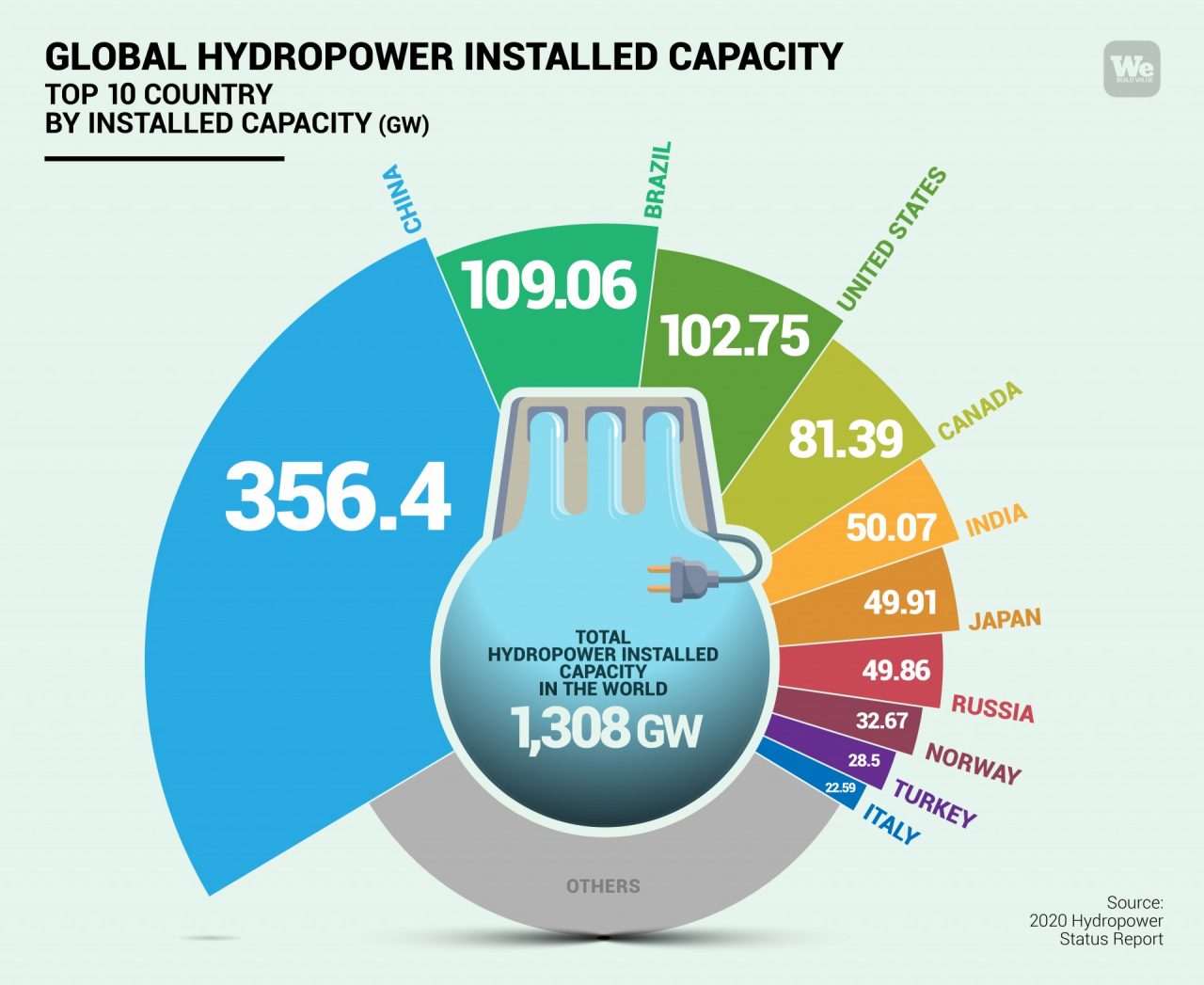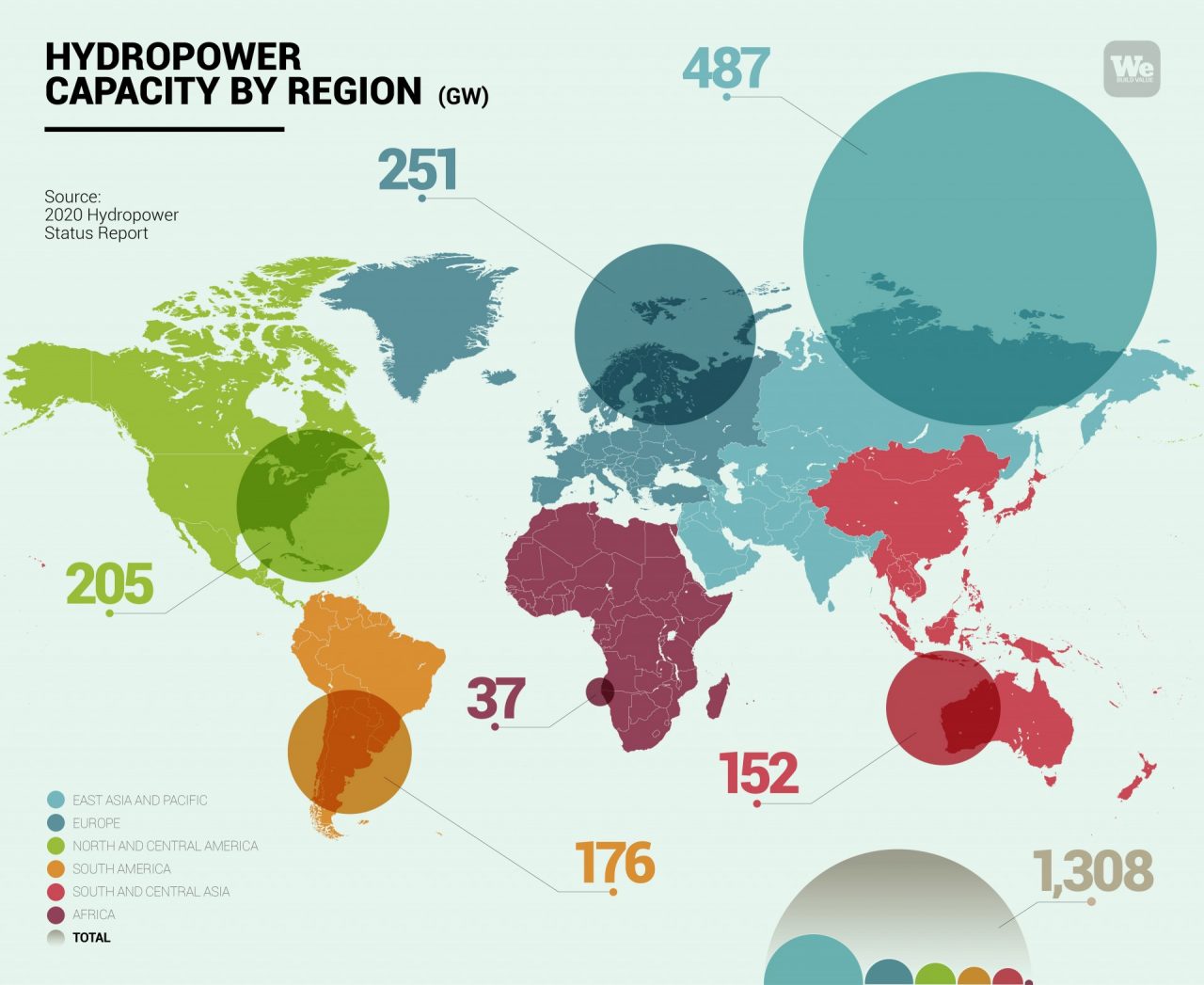It is the largest source of clean energy in the world, an incredible resource that comes from nature and has been harnessed for the service of man. It is also the most dependable, as demonstrated in India during Covid-19 on April 5, when the traditional energy grid collapsed from a plunge in demand after Prime Minister Narendra Modi called for Indians to switch off their lights to express solidarity. Hydroelectric power kept the country from suffering a general blackout.
Today installed capacity of hydroelectric plants globally has reached 1,300 GW, according to the International Hydropower Association, but in order to meet global climate change targets the International Renewable Energy Agency (IRENA) says in its latest Global Renewables Outlook 2020 that hydro production must increase by 60% by 2050.
This necessary increase will play a significant role in meeting the demand for clean energy and in terms of employment and growth. To reach these levels of production, IRENA calculates that investments of $1.7 trillion are needed, which would create 600,000 jobs.
“For the energy sector as a whole, the Covid-19 crisis has caused unprecedented volatility and uncertainty,” said the International Hydropower Association in the forward to its 2020 Hydropower Status Report. “Electricity demand and prices have plunged by up to 20% in some markets. The sector is undergoing a huge involuntary transformation which can be shaped for a more sustainable future. Policy makers and planners need to initiate new projects now, due to the longer planning cycles for hydropower construction.”



